The 1928 Buffalo Nickel value ranges from $5 to $39,750 depending on condition and mint mark. Coins are available in D, S, and no mint mark varieties. Values increase significantly with grade: Good condition (G-4) starts at $5, Very Fine (VF-20) reaches $17, and About Uncirculated (AU-50) commands $101. Uncirculated specimens are particularly valuable, with MS-63 graded coins worth $697, MS-65 at $2,655, MS-66 at $13,275, and pristine MS-67 examples reaching $39,750. Error varieties can command premium prices above standard values.
The 1928 Buffalo Nickel represents one of the final years of this iconic American series, and certain specimens command extraordinary prices at auction. While circulated examples trade for modest sums, pristine uncirculated pieces have sold for nearly $40,000. Understanding the differences between Philadelphia, Denver, and San Francisco mintages—along with recognizable errors—can reveal whether your nickel is worth pocket change or a substantial investment.
Understanding the 1928 Buffalo Nickel Production
The United States Mint produced Buffalo Nickels at three facilities in 1928, creating distinct varieties that collectors value differently. Philadelphia struck 23,411,000 pieces without a mint mark, making it the most common variety. The Denver Mint produced 6,436,000 nickels marked with a “D” on the reverse beneath the buffalo, while San Francisco contributed 6,936,000 pieces bearing an “S” mint mark in the same location.
Production quality varied significantly across these facilities. Philadelphia coins from 1928 generally show sharper strikes with better-defined details on the buffalo’s head and the Native American profile. Denver and San Francisco issues frequently exhibit weaker strikes, particularly on the high points of the design, which affects their grading potential and market value.
The 1928 production year occurred near the end of the Buffalo Nickel series, which concluded in 1938. By this time, the dies had been refined multiple times since the design’s 1913 introduction, resulting in more consistent quality compared to earlier years plagued by rapid die wear.
1928 Buffalo Nickel Value by Mint Mark
1928 No Mint Mark (Philadelphia)
Philadelphia-minted Buffalo Nickels without mint marks represent the most accessible variety for collectors. Circulated examples in Good condition (G-4) typically sell for approximately $5, showing heavy wear but maintaining visible date and design elements. As condition improves, values increase substantially.
Value Table for 1928 Philadelphia:
| Grade | Value |
|---|---|
| Good (G-4) | $5 |
| Fine (F-12) | $8 |
| Very Fine (VF-20) | $17 |
| Extremely Fine (EF-40) | $45 |
| About Uncirculated (AU-50) | $101 |
| Uncirculated (MS-63) | $697 |
| Uncirculated (MS-65) | $2,655 |
| Uncirculated (MS-66) | $13,275 |
| Uncirculated (MS-67) | $39,750 |
Heritage Auctions recorded a remarkable sale in January 2023 when a 1928 Buffalo Nickel graded MS-67 by Professional Coin Grading Service (PCGS) sold for $39,750. Only three examples have achieved this grade level, making them exceptionally rare. The dramatic value increase from MS-66 to MS-67 reflects the scarcity of virtually perfect specimens.
1928-D Buffalo Nickel (Denver)
Denver-minted specimens display the “D” mint mark beneath the buffalo on the reverse side. These coins command slightly higher premiums than Philadelphia issues in circulated grades due to their lower mintage. A Good condition 1928-D typically trades for $6 to $8, while Very Fine examples reach $22 to $28.
Uncirculated 1928-D nickels show significant value progression. MS-63 specimens average $825, while MS-65 examples approach $3,200. The highest graded 1928-D, certified MS-67, sold through Stack’s Bowers Galleries in 2022 for $44,650, exceeding even the Philadelphia MS-67 record.
Collectors should examine the mint mark carefully, as weak strikes sometimes obscure the “D,” leading to misidentification. Authentic 1928-D nickels show the mint mark positioned centrally below the buffalo, though strike weakness may affect its clarity.
1928-S Buffalo Nickel (San Francisco)
San Francisco production yielded the second-lowest mintage among 1928 varieties. The “S” mint mark appears in the same location as the Denver mark, beneath the buffalo. These coins generally parallel Denver values in lower grades, with Good condition examples selling for $6 to $9.
Higher grade 1928-S nickels demonstrate strong collector demand. MS-63 specimens trade around $875, while MS-65 examples command approximately $3,400. An MS-66+ 1928-S sold at Heritage Auctions in March 2023 for $19,200, showcasing the premium collectors pay for exceptional condition combined with lower mintage.
The 1928-S presents particular challenges for grading due to prevalent weak strikes from worn dies. Full details on the buffalo’s head and the Native American’s feathers significantly impact value within the same numerical grade.
Recognizable 1928 Buffalo Nickel Errors
Three-Legged Buffalo Error
While the famous three-legged buffalo error occurred primarily in 1937-D production, collectors should examine 1928 specimens for similar die polishing anomalies. Some 1928-D nickels show weakened or partially missing front leg details due to excessive die polishing, though these don’t command the premium of the 1937 variety. Such pieces typically add 20-40% to standard values depending on the severity of the missing detail.
Double Die Obverse
Several 1928 Buffalo Nickels exhibit minor doubled die characteristics, particularly visible in the date and “LIBERTY” inscription. Examine the tops of the numbers in the date under 10x magnification for slight doubling. Authenticated doubled die varieties add $150 to $600 in circulated grades, while uncirculated examples with pronounced doubling can reach $2,000 or more.
A particularly strong 1928 doubled die obverse sold through eBay’s collectibles authentication program in 2023 for $1,875 in AU-55 condition, demonstrating market appetite for well-documented error varieties.
Repunched Mint Mark
Both 1928-D and 1928-S varieties occasionally show repunched mint marks where the mint mark punch was applied multiple times in slightly different positions. Look for shadow images of the “D” or “S” beneath or beside the primary mint mark. Minor repunching adds modest premiums of $25 to $75 in circulated grades, while dramatic examples in high grades can double standard catalog values.
Off-Center Strikes
Off-center errors occur when the planchet isn’t properly positioned in the collar during striking. The 1928 Buffalo Nickel with 10-15% off-center strikes showing complete dates typically sell for $200 to $400. More dramatic 30-40% off-center specimens with visible dates have reached $800 to $1,500 at specialized error coin auctions.
Stack’s Bowers sold a 1928-D Buffalo Nickel with approximately 25% off-center strike for $625 in 2022, graded MS-62 despite the error, demonstrating how mint state errors command significant premiums.
Grading Factors That Impact Value
Buffalo Nickel grading focuses on specific design elements that wear first through circulation. The highest points—the buffalo’s hip and shoulder, along with the Native American’s cheekbone—show friction before other areas. Even light wear on these points drops a coin from Mint State (MS-60 and above) to About Uncirculated (AU-58).
Full horn details on the buffalo separate premium uncirculated grades. An MS-65 Buffalo Nickel must display complete horn separation with sharp, raised detail. Specimens with weak or merged horn details typically grade no higher than MS-63, even with excellent overall preservation.
Luster quality significantly affects grades within the Mint State range. Original, unbroken luster with no dullness or cleaning marks supports MS-65 and higher grades. Any disruption to the luster, including dipping or light cleaning, caps grades at MS-64 regardless of other positive attributes.
Strike quality varies considerably among 1928 Buffalo Nickels. Full Designation (FD) or Full Details designations from grading services add 25-50% premiums because so few examples show complete striking on all design elements. PCGS and NGC award these special designations sparingly, requiring exceptional sharpness across the entire design.
Authentication and Professional Grading Recommendations
Given the substantial value difference between grades—particularly in the Mint State range—professional authentication through PCGS, NGC, or ANACS provides essential protection against counterfeits and enables accurate valuation. The cost of grading services ranges from $20 for economy service to $150 for express service, which proves worthwhile for any 1928 Buffalo Nickel appearing to grade AU-50 or higher.
Counterfeit 1928 Buffalo Nickels exist, particularly high-grade examples and error varieties. Authentic pieces weigh 5 grams and measure 21.2 millimeters in diameter. The composition consists of 75% copper and 25% nickel. Weight variations exceeding 0.1 grams indicate potential problems, though environmental damage can affect weight.
Magnetic testing provides a quick authentication check. Genuine Buffalo Nickels contain no ferrous metals and shouldn’t respond to magnets. Any magnetic attraction indicates a counterfeit or altered piece.
Professional grading services also identify cleaning, which devastates value. A cleaned 1928 Buffalo Nickel that might otherwise grade MS-64 receives a “Details” grade with a “Cleaned” qualifier, typically reducing market value by 60-80% compared to properly graded specimens.
Where Premium 1928 Buffalo Nickels Appear
Premium uncirculated 1928 Buffalo Nickels occasionally surface in original mint set holders, though complete 1928 sets are scarce. Estate collections assembled during the 1930s through 1950s sometimes contain high-grade examples stored before circulating.
Bank-wrapped original rolls of 1928 Buffalo Nickels rarely appear but can yield multiple uncirculated specimens. A partial roll of twenty 1928-S nickels sold at Heritage Auctions in 2021 for $8,400, with individual pieces grading MS-63 to MS-65 after breaking out the roll.
Metal detector finds occasionally produce 1928 Buffalo Nickels, though ground burial typically reduces grade to VF-20 or lower due to environmental exposure. Coins recovered from old buildings during renovation, particularly from beneath floorboards or within walls, sometimes retain higher grades due to dry storage conditions.
Building a Complete 1928 Buffalo Nickel Collection
Assembling all three mint marks in matching grades creates an achievable collecting goal. A complete circulated set in Very Fine condition costs approximately $60 to $75, providing an affordable entry point. Collectors seeking About Uncirculated examples should budget $275 to $350 for all three mint marks.
Advancing to Mint State examples requires significant investment. A complete MS-63 set costs $2,200 to $2,500, while MS-65 specimens exceed $9,000 for the three-coin set. Few collectors pursue MS-66 or higher complete sets due to scarcity and cost exceeding $40,000.
Specialized collectors focus on assembling complete grading runs, acquiring examples from Good through Mint State for a single mint mark. This approach provides educational value, demonstrating how wear progresses and how grading standards apply across condition levels.
Error variety collectors often add 1928 specimens to complement more famous Buffalo Nickel errors from other years. The relative affordability of 1928 doubled dies and repunched mint marks compared to 1937-D three-legged specimens makes them attractive targets.
Maximizing Value When Selling 1928 Buffalo Nickels
Coins grading AU-50 and higher benefit from professional grading before sale. The third-party certification adds credibility that typically increases realized prices by 15-30% beyond the grading fee cost. Lower grade circulated examples usually sell effectively without certification through reputable dealers or online marketplaces.
Auction houses including Heritage, Stack’s Bowers, and Legend Auctions provide optimal venues for MS-65 and higher specimens. These firms maintain extensive buyer databases of advanced collectors willing to pay strong prices for premium examples. Consignment fees typically range from 10-20% but result in better net returns than direct sales for high-value pieces.
Error varieties require clear, high-resolution photography showing the specific error characteristics. Listings should reference established error variety catalogs such as “The Cherrypickers’ Guide to Rare Die Varieties” to help buyers understand what they’re purchasing.
Timing sales to coincide with major numismatic conventions like the American Numismatic Association World’s Fair of Money or Florida United Numismatists shows can attract more bidder attention, particularly for exceptional specimens.
Smart Buying Strategies for Collectors
Purchasing 1928 Buffalo Nickels requires careful examination of high points for wear. Many AU-58 coins appear uncirculated to inexperienced collectors but show slight friction on the buffalo’s hip visible under proper lighting. This grade distinction significantly impacts value, so magnification and good lighting are essential.
Estate sales and local coin shops sometimes offer better values than major auctions for circulated and lower-end uncirculated specimens. Dealers often price 1928 Buffalo Nickels conservatively when they’re not the primary inventory focus, creating opportunities for informed buyers.
Online marketplaces like eBay require diligence regarding grade accuracy. Compare listing photographs against certified examples of the claimed grade using auction archives. Be suspicious of prices significantly below market—they often indicate overgraded coins or problems not mentioned in listings.
Buying certified examples from PCGS or NGC provides protection against grade disputes and counterfeits. The registry set programs from these services also add competitive collecting dimensions, with participants building finest-known sets and competing for rankings.
Investment Potential and Market Trends
The Buffalo Nickel series demonstrates consistent long-term appreciation, with high-grade examples showing particularly strong performance. MS-65 1928 Buffalo Nickels valued at $1,200 in 2010 now command $2,655, representing a 121% increase over thirteen years and outperforming general inflation.
MS-67 specimens show even more dramatic appreciation. The $39,750 record for 1928 Philadelphia MS-67 represents a nearly 300% increase from 2015 pricing levels around $13,000. Limited populations at this grade level create strong competition among advanced collectors pursuing registry sets.
Market corrections do occur, particularly for coins in MS-63 to MS-64 grades where populations are more substantial. These specimens saw 15-20% value declines during the 2020-2021 precious metals volatility but have since recovered to previous levels.
Error varieties maintain dedicated collector followings that support stable values. The specialized nature of error collecting means market fluctuations affect these pieces less than standard date coins, providing some investment stability.
Resources for Further Research
The Official Red Book (A Guide Book of United States Coins) provides annual updated values and mintage information for all Buffalo Nickel varieties. The NumisMedia Fair Market Value price guide offers weekly pricing updates reflecting actual market transactions rather than retail estimates.
PCGS CoinFacts and NGC Coin Explorer databases contain population reports showing exactly how many examples exist at each grade level. This information proves invaluable for understanding rarity and assessing whether prices align with scarcity.
David W. Lange’s “The Complete Guide to Buffalo Nickels” offers comprehensive coverage of varieties, errors, and collecting strategies specific to this series. The book includes detailed photographs showing grading standards and variety characteristics.
Online forums including the PCGS Discussion Board and Coin Community provide access to experienced collectors who share authentication tips and market insights. These communities often identify newly discovered varieties and discuss emerging market trends before they appear in printed references.
Taking Action With Your 1928 Buffalo Nickels
Begin by carefully examining any 1928 Buffalo Nickels in your collection under magnification, checking for mint marks, error characteristics, and wear patterns. Compare your examples against certified specimens in online auction archives to estimate grade ranges. For coins appearing to grade AU-50 or better, consider professional authentication and grading to establish definitive values and protect your investment. Whether you’re building a complete date set, specializing in high-grade specimens, or searching for profitable error varieties, the 1928 Buffalo Nickel offers multiple pathways into this classic American series with values ranging from affordable to extraordinary.
You may be interested:
- 1859 Indian Head Penny Coin Value Complete Errors List And No Mint Mark Worth Guide For Collectors
- 1911 V Nickel Coin Value Guide Complete Errors List And No Mint Mark Worth Today
- 1902 Dime Coin Value Complete Errors List With O S And No Mint Mark Worth Guide
- 1788 Quarter Coin Value Complete Guide Errors List And D S P Mint Mark Worth Revealed
- 1776 To 1976 Bicentennial Half Dollar Coin Value Complete Errors List And What Your D S And No Mint Mark Coins Are Actually Worth
- 1990 Penny Coin Value Errors List How D S And No Mint Mark Pennies Are Worth Thousands Of Dollars

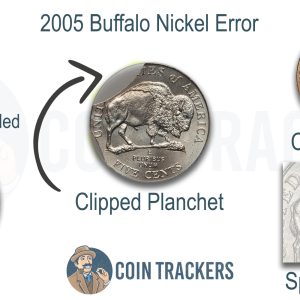
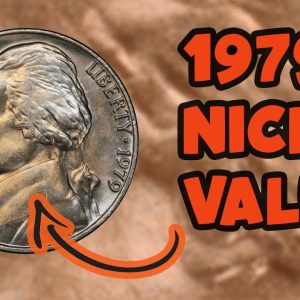
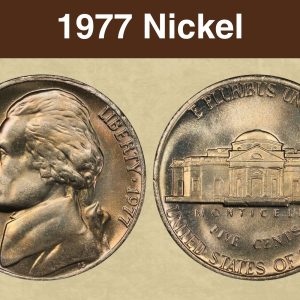
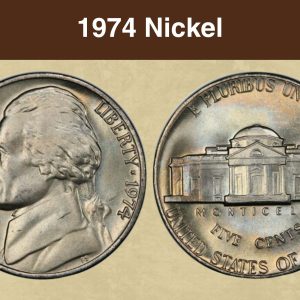
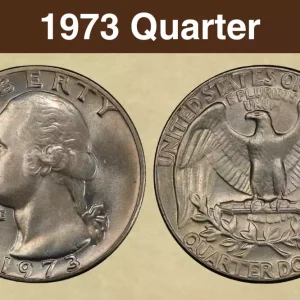
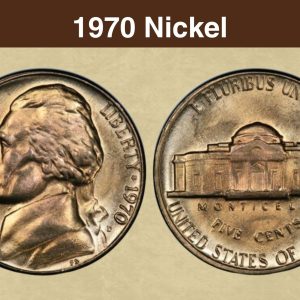
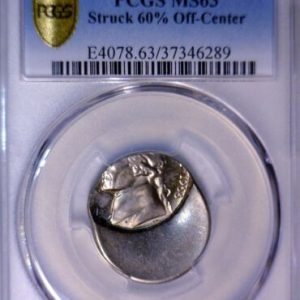
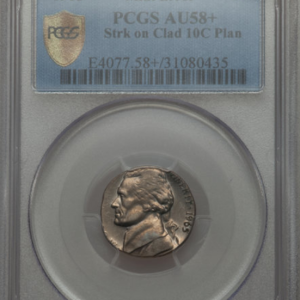
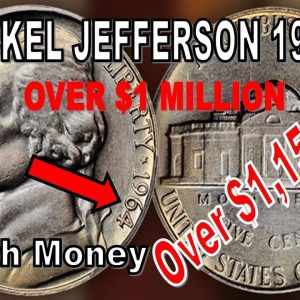
How much is a 1928 S Buffalo nickel worth?
Good (G-4): ~$5 Very Fine (VF-20): ~$17 About Uncirculated (AU-50): ~$101 Uncirculated (MS-63): ~$697 Uncirculated (MS-65): ~$2,655 Uncirculated (MS-66): ~$13,275 Uncirculated (MS-67): ~$39,750
What makes a 1928 Buffalo Nickel valuable?
And collectible videos here on the channel as always let’s just hop into this one starting off first here with a 1928 Buffalo nickel that is graded by the coin grading company PCGS. At a mintstate 61
How do I know if I have a rare Buffalo nickel?
A Buffalo nickel’s rarity is determined by key dates, low mintages, and specific design flaws or errors. For example, the 1913-S Type 2, 1921S, 1924S, and 1926S are rare key dates. Errors like the 1937-D “three-legged” nickel or repunched mint marks, as well as a coin’s condition, significantly increase its value.
Where is the mint mark on 1928 Buffalo Nickel?
On a 1928 Buffalo nickel, the mint mark (if present) is on the reverse (back) side of the coin, underneath the words “FIVE CENTS”. Philadelphia coins will have no mint mark, while Denver coins will have a “D” and San Francisco coins will have an “S”.